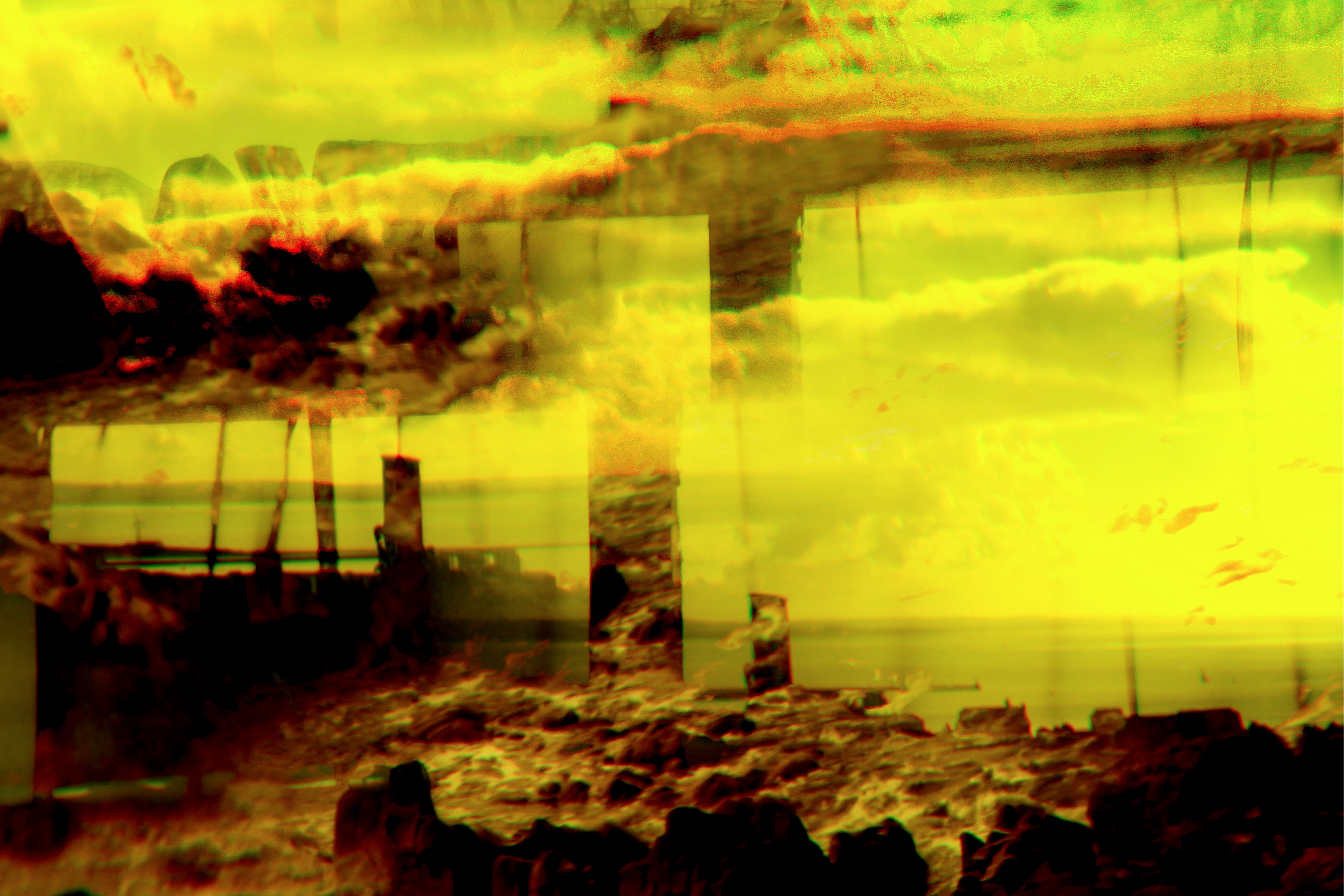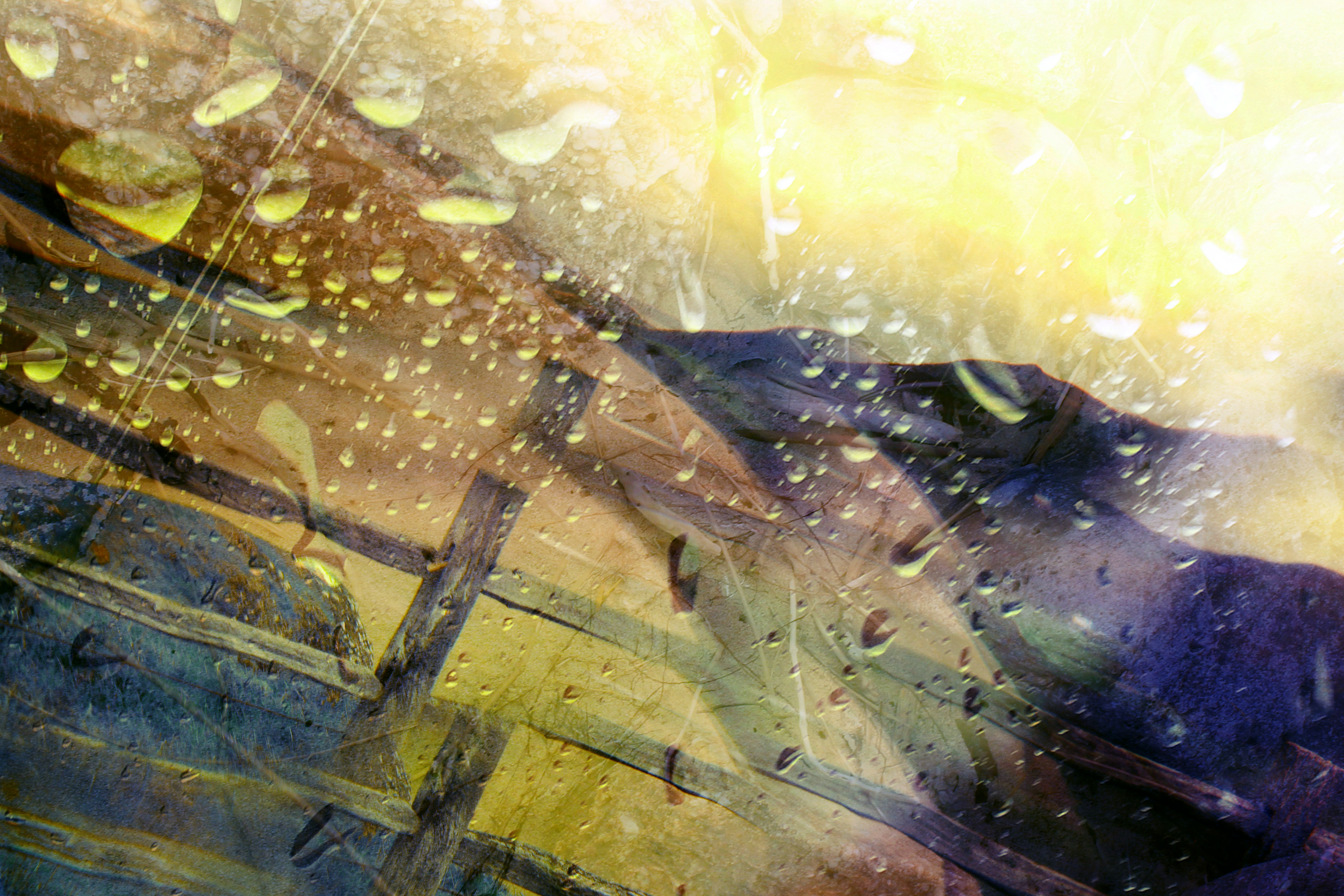

James Peaple, winner of the A.Bliss award in partnership with Swansea University
This year, in partnership with Swansea University, A.Bliss created an award to present to a final year photography student. The A.Bliss Award equates to a mounting and framing voucher for future projects / exhibitions. It is granted to students who display exceptional photographic talent, an interesting or experimental process and a developed artistic line of enquiry.
Swansea Universities’ final year BA Photography in the Arts show was named ‘Overly Blueish,’ pertaining to the instability and surreal nature of the last few years. Every student presented work which had sensitivity and depth, that was probing and hopeful in equal measure. Although an inevitably difficult decision, the A.Bliss Award 2023 went to James Peaple and his body of work, ‘An Ugly Lovely Town.’
This series explores memory, place and identity through the lens of poet Dylan Thomas. These pieces are layered and complex, lyrical and intriguing. This body of work leads on from James’ second-year project exploring his own familial history and its connection to the Welsh landscape. He wanted to continue exploring these themes in conjunction with Wales and Swansea but with a subject outside of himself or his immediate family. James became interested in Dylan Thomas as a kind of figurehead of the city and how it shaped him as an artist. He began to read his short stories and poetry, returning to the landscapes that Thomas described so vividly in his works. James says, ‘there is a lot of remembering in Dylan Thomas’ work and these memories are often tied to specific places. I am interested in how locations become reference points for recollection, how place can be a vital cornerstone for someone’s sense of self. I wanted to look at this connection between place, memory and identity closer, to stretch myself to explore it through someone else unrelated to me or my family.’
This project began when James visited Dylan Thomas’ childhood home in Swansea, whilst thinking about different directions to take his 3rd year project. ‘The tour guide showed me Thomas’ parent’s bedroom which had a view of Swansea: on the one side the ocean, on the other cranes and high-rises. Through this window I saw the ‘Ugly, Lovely Town,’ Thomas described so vividly. I saw how beauty and industry collide in this place.’ This inspired James’ first image named, ‘Ugly, Lovely Town,’ and quickly became the motivation for the entire project. He began avidly reading Tomas’ short stories and poems, picking out poignant descriptions of places, such as Rhossili Beach in the short story An Extraordinary Little Cough.
James would visit these places, setting up shoots and using objects to distort or blur the landscape. This took the form of familial items, such as a crystal that belonged to his grandmother, or more purposefully made materials such as scratched or burned Perspex screens which distorted light and shape. The images then went through another round of manipulation. James digitally altered them: double exposing, playing with colour, adjusting tone, layering several images on top of the other ‘until the image felt like my own,’ James says.
This is why these pieces are so intriguing. They are dream-scapes, reminiscent of specific landscapes but also entirely apart from them: warped and moving, veiled and heartfelt. They are like memories: some elements in sharp focus whilst others shift and blur. It is the sense of a place, the feeling of it rather than a crystal-clear view.
James enjoys photography as a locus for experimentation. He enjoys the technical and playful aspects of altering an image, for example, using colour to create the atmosphere he finds in Thomas’ works, instead of using it more literally. ‘The digital manipulation of the landscape allows me to make my own vision, to create my own landscape in a way I wouldn’t be able to create otherwise.’ For James, this makes the outcome more engaging and emotive.
James People creates images much like an abstract landscape painter. He uses the idea of a specific place but it not wedded to it. Onto perceptive imaginings of how Thomas experienced these locations, he layers his own experience and visual experimentation to create pieces which are sensitive, poetic and completely evocative.
This post is the first in a series of ‘Bliss Talks’ - interviews with artists A.Bliss has worked with on mounting and framing their work. Look out for our next posts on artists Emily Allchruch and Jyll Bradley, which are coming soon.
Article by Kate from A.Bliss




